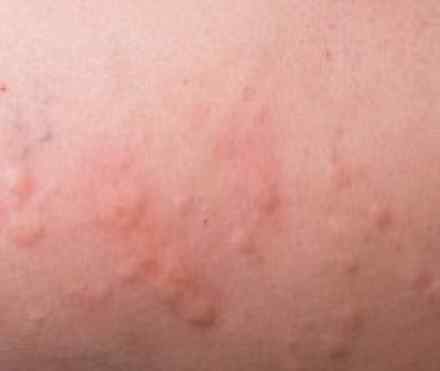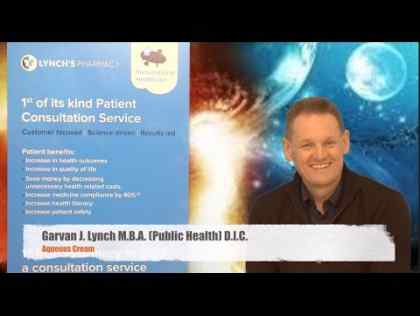
What is it?
- Heat rash — also known as prickly heat and miliaria — isn't just for babies. Though it's common in infants, heat rash can affect adults too, especially during hot, humid weather.
- Heat rash develops when your sweat ducts become blocked and perspiration is trapped under your skin. Symptoms range from superficial blisters to deep, red lumps. Some forms of heat rash can be intensely itchy or prickly feeling.
- Heat rash usually goes away on its own. Severe forms of heat rash may need medical care, but the best way to relieve symptoms is to cool your skin and prevent sweating.
Symptoms
Adults usually develop heat rash in skin folds and wherever clothing causes friction. In infants, the rash is mainly found on the neck, shoulders and chest, but it can also occur in the armpits, elbow creases and groin.
There are three types of miliaria, which are classified according to where the sweat ducts are blocked. Signs and symptoms for each type vary.
Miliaria crystallina
The mildest form of heat rash affects the sweat ducts in the topmost layer of skin. Miliaria crystallina is marked by:
- Tiny, clear, superficial blisters and bumps (papules) that break easily
The blisters that occur with miliaria crystallina aren't itchy or painful. This type of heat rash usually clears on its own but can come back if hot, humid weather persists. And though it's common in newborns, adults can develop it too.
Miliaria rubra
Occurring deeper in the outer layer of skin (epidermis), miliaria rubra is sometimes called prickly heat. Adults usually develop miliaria rubra after they're exposed to hot, humid weather or if they're confined to bed rest. Infants usually develop this type of heat rash between the first and third weeks of life. Signs and symptoms typically include:
- Red bumps
- Itchy or prickly feeling in the affected area
- Little or no sweating in the affected areas (anhidrosis)
Miliaria profunda
A less common form of heat rash, miliaria profunda occurs mainly in adults who have had repeat bouts of miliaria rubra. It affects the dermis, a deeper layer of skin, and appears soon after exercise or any activity that causes sweating. Signs and symptoms may include:
- Firm, flesh-colored lesions that resemble goose bumps
- A lack of perspiration, which may lead to symptoms of heat exhaustion, such as dizziness, nausea and a rapid pulse
Causes
Heat rash develops when some of your sweat ducts become clogged. Instead of evaporating, perspiration remains trapped beneath the skin, causing inflammation and rash.
It's not always clear why the sweat ducts become blocked, but certain factors seem to play a role, including:
- Immature sweat ducts. Because a newborn's sweat ducts aren't fully developed, they can rupture more easily, trapping perspiration beneath the skin. This usually happens in hot weather, but can occur anytime infants are dressed too warmly. Newborns who have high fevers or are in incubators can also develop blocked sweat ducts.
- Tropical climates. Hot, humid weather is particularly conducive to miliaria.
- Physical activity. Intense exercise, hard work or any activity that causes you to perspire extensively can lead to heat rash.
- Certain fabrics. You may develop heat rash if you consistently wear clothing that doesn't allow perspiration to evaporate normally.
- Medications. Certain prescription medications have been linked to heat rash, including bethanechol (Urecholine), which treats bladder problems; clonidine (Catapres), a high blood pressure drug sometimes used to treat attention-deficit/hyperactivity disorder (ADHD); the acne medication isotretinoin (Accutane); and doxorubicin (Adriamycin), a chemotherapy drug.
- Overheating. Overheating in general — bundling up too much in winter, sleeping under an electric blanket — can lead to heat rash.
- Heavy creams and ointments. These products can block the sweat ducts.
Heat rash can also occur in people who are confined to a hospital bed for long periods, especially if they have a fever.
Risk factors
Factors that make you more prone to heat rash include:
- Being a newborn. Though heat rash can affect anyone, newborns are most susceptible.
- Being in a tropical climate. People living in the tropics are far more likely to have heat rash than are people in temperate climates.
- Participating in intense physical activities. Anything that makes you sweat profusely, especially if you're not wearing moisture-wicking clothing, can trigger heat rash.
Complications
Heat rash usually heals without problems, but complications sometimes occur, such as:
- Infection. Occasionally, heat rash becomes infected with bacteria, causing inflamed and itchy pustules. This can occur in children in diapers but shouldn't be confused with diaper rash, which results from irritation to tender skin, not from blocked pores.
- Heat exhaustion. In hot weather, people with miliaria profunda are at risk of heat exhaustion, because their sweat ducts are blocked. Heat exhaustion can cause low blood pressure, dizziness, nausea, headache and a rapid pulse. Untreated heat exhaustion can lead to heatstroke, a life-threatening condition.
Diagnosis
No tests are needed to diagnose heat rash; your doctor can determine the problem with a visual exam.
References:
http://www.parents.com/baby/safety/outdoor/treating-heat-rash/
http://www.medicinenet.com/heat_rash/article.htm
http://www.healthline.com/health/heat-rash-pictures-remedies
http://www.emedicinehealth.com/heat_rash/article_em.htm
http://patient.info/health/prickly-heatheat-rash-miliaria
http://www.nhs.uk/Conditions/Prickly-heat/Pages/Introduction.aspx


